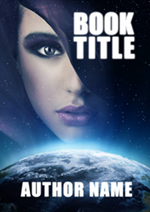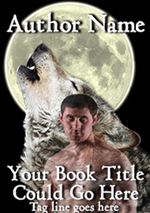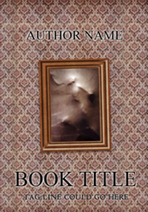On Cover Design for Fiction Novels, Part 1
This is a two-part post written primarily for other independent authors on cover design for fiction novels, with personal opinions and experience galore. There's a lot to cover (heh!), so let's dive right in.
Great Cover Design Sells Books
 Fiction covers, experts will tell you, will make or break a sale before the reader even reads one word (not even the title) of an author's deathless prose. I believe it. We humans are visual animals, and we're attracted to color and images that intrigue us. There are several authors whose work I'll read despite the covers, because I know the quality of the work inside. If I don't know the series or the author, or have no recommendations from friends, it's the cover that will first draw my eye.
Fiction covers, experts will tell you, will make or break a sale before the reader even reads one word (not even the title) of an author's deathless prose. I believe it. We humans are visual animals, and we're attracted to color and images that intrigue us. There are several authors whose work I'll read despite the covers, because I know the quality of the work inside. If I don't know the series or the author, or have no recommendations from friends, it's the cover that will first draw my eye.
Qualifications, Disclaimer, and Disclosure
First, before we go any further, a bit about me. I'm not an artist, and there are certainly people who know more than me on this subject, but I know something about graphic design and execution from my business and theatrical life. Please check out the opinions and experience of others, too. Now, my biases: I'm a curmudgeon and don't like the real-people-in-costumes covers for fiction these days. When I read fiction, I'm entering a world of make-believe, and I want the cover to give me the artistic representation of the story and/or characters, not real, vacuously pretty people. I grew up reading genre fiction — science fiction, mysteries, action thrillers, romances, etc. — and loved the covers done for them. That's probably why I have a strong preference for illustrated covers, as opposed to photo manipulation.
Terminology, and Some Advice
What Makes a Great Cover?
I think young adult and steampunk covers are the most interesting these days, an urban fantasy and high fantasy are routinely good. Mysteries have good and bad. Comic-style or graphic novel-style art or cartoons can help or hurt, depending on the book. Some wretchedly bad covers can be found on paranormal romances, wherein random half-naked individuals, animals, bloody fangs, and maybe a moon, are slapped on the cover in random order along with the title and author name (and those are often in illegible fonts). I don't want to embarrass the authors by posting examples, so I'll pick on the pre-made covers instead. The problem with real people is the models are hired for more than one gig, and I've seen the same woman on more than one cover of very different books. Still, I bet all the above sell better than the abstract, amorphous covers that you can't even tell if it's fiction or some sort of spiritual self-help book, even after you read the title.
 |
 |
 |
 |
| This woman looks an awful lot like… |
…this woman (gotta love Photoshop) | Moon? Check. Animal? Check. Naked man? Trifecta! |
Horror? Oil painting? Interior decoration? |
I haven't made as extensive a study of other genres, so maybe there are some worse offenders.
My Quest for a Great Cover
I'm really please with the cover for Overload Flux. In part two of this post, I'll tell you how I got it.








